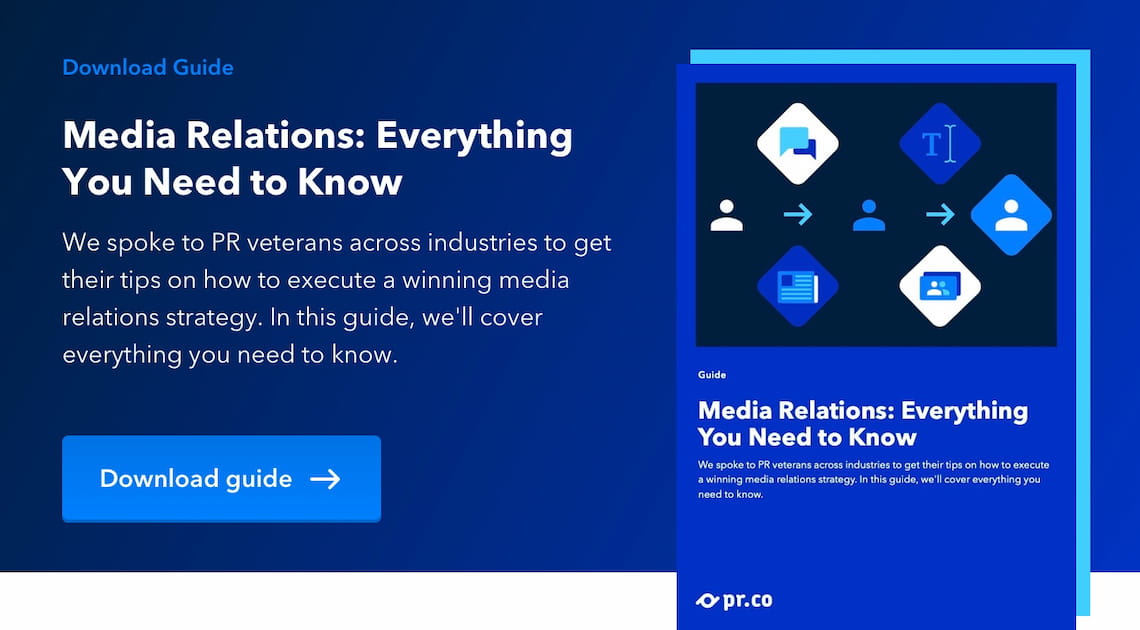The numbers don’t lie: the days of intrusive messages and stale marketing tactics are long gone. Marketers and salespeople have understood that pitching and using outbound tactics aren’t the only way to land leads or customers.
As it turns out, “consumers” are thinking creatures. They like to think for themselves and definitely don’t like to be sold to. Surprising, right? That’s when Hubspot came up with a solution: inbound marketing. This methodology focuses on creating valuable and helpful content that could be discovered by these thinking creatures called consumers. Inbound marketing is about pulling customer prospects toward a business through the use of digital tools like blogging, search engine optimization, and social media.
It’s about time PR comes to this realization too. Cold calling, email bombarding, and ‘spray and pray’ methods for pitching are no longer working. Just like "consumers", journalists are also (very critical) thinking creatures. They are not passively publishing whichever press release finds its way to their inbox. Journalists today are actively searching for their stories. They find these stories through research or through a close network of friends or thought leaders.
We won’t say outbound sales are dead. Not yet, anyway. But we do argue that if you want a strong influx of new potential customers, there are certain things you can pick up from inbound marketing to increase your chances of getting published.
Hubspot's Inbound Marketing Methodology
The inbound marketing methodology was originally developed by Hubspot, a popular marketing automation tool. The three stages of the inbound methodology consist of attracting prospective customers through valuable content, engaging them in meaningful conversations, and finally, delighting them once they’ve become a customer.
At the core of this methodology lies the power of content. By providing useful information, through different channels, using a variety of digital tools, users will be well-equipped with information to make a decision. This transforms into trust, which can of course lead to economic success for your company.
In this sense, inbound marketing is more effective than traditional outbound marketing because it attracts, instead of interrupts. Inbound marketing relies on attracting potential customers by providing valuable information that they can’t find anywhere else, for free. You pique their interest. On the other hand, outbound is all about pitching to people that might be interested, but have never heard of you. In today’s world, the traditional way of reaching out to people is simply inconvenient. Just think of how your browser blocks pop-ups, how we use caller ID to filter our calls, and how quickly we scroll past ads. Inbound responds to the way humans connect in the 21st century.
We recently sat down with Iliyana Stareva, Global Partner Program Manager at HubSpot and the author of ‘Inbound PR’. Read her tips on how to do media relations the inbound way.
How to use inbound marketing to land more coverage
The inbound marketing methodology can maximize PR’s strengths and alleviate its weaknesses. It helps you attract relevant press contacts, instead of interrupting their busy days. Here is how you can apply its principles to optimize your PR strategy and increase your chances of getting covered:
Leverage the power of content to build a press network
The meeting point between inbound marketing and PR is content. As we mentioned before, inbound marketing relies on high-quality content that will reel in users and accompany them through whichever step they’re in their process. Similarly, and it goes without saying, content is what lies at the heart of PR. PR’s greatest strength is the ability to turn any information into a compelling tale with an angle that resonates.
Inbound marketing suggests that PR pros can leverage the power of content in order to reel in journalists and other stakeholders. This is done by creating captivating and newsworthy news articles and stories that can be easily found on search engines and social media. By using inbound’s lead capturing tactics, media professionals will leave their contact details. After this, PR pros can begin to cultivate fruitful relationships with these fresh contacts.
Expand your reach through your shared and owned channels
Remember the PESO model? Gini Dietrich’s famous framework segments different types of channels that come together in PR. It stands for paid, earned, shared, and owned media. As PR professionals, we tend to get caught up in our day-to-day tasks, trying to provide measurable results in paid media (such as paid partnerships), earned (like word of mouth), and shared media (review platforms and forums, for example).
Public relations typically relies on earned media: by pitching stories to their earned press network. We easily forget about shared and owned channels. Inbound marketing invites us to consider the power of owned media — specifically because we hold power over it. It is ours, after all.
By publishing press releases and stories in a newsroom, instead of just sending them out as PDFs, companies get two massive perks:
- these stories become shareable (and therefore findable!) on social media.
- Also, since the stories are published on your own domain, these stories will be findable through search engines and boost your entire website's ranking on search engines.
Last but not least, by allocating resources and efforts to your ‘owned’ media strategy, you get to control the narrative. You create, publish, share, and essentially own the content you produce.
Become visible for journalists through search engines
According to research, only 3% of journalists state that they heavily rely on press releases. Yep, not a typo — three percent. So if journalists are not checking their inboxes, where do they go to source their news? The answer is simple. They hit the internet.
When journalists go down the rabbit hole searching for a story, you want to give them all the answers to any question they might have. You want to provide useful information, powerful images, detailed facts, and contact information in case they want to reach out. One way to make it ridiculously easy for journalists to find your information is to have a killer online newsroom.
Over the past ten years, we’ve learned a thing or two about building newsrooms. It's why we're trusted by socially conscious brands WeTransfer, Dopper, Shimano, and Dolby. Here's how we can help you.
Build a reputation and become a thought leader
Inbound is all about educating audiences through content and guiding them towards making decisions. And if, in the end, your product or service is chosen, well, who’s complaining? In terms of PR, applying the inbound philosophy can help you build a reputation as being knowledgeable and helpful. Through time, this can transform into thought leadership which helps you build upon your influence by showcasing your expertise, your unique ideas, and your original approach to the work you do.
Increase organic traffic on all your articles
Another perk of using the inbound marketing methodology in PR is it helps ramp up your SEO strategy. By sharing your content through your own channels, it automatically becomes available to anyone that has access to Google or other search engines. If you’ve done your keyword research correctly, your content will begin to pop up in search engines and in curated Google Newsfeeds. If you get lucky and begin to get picked up by high-ranking websites, you can increase your domain authority by getting backlinks from those reputable websites. Producing, hosting, and sharing content on your channels can be very beneficial for your SEO strategy.
Why is SEO so important to your PR strategy? Here’s how it can help you increase your coverage.
Build a press list
Both inbound marketing and PR have one common objective: to build long-lasting relationships with the communities that matter most. The inbound methodology invites PR pros to build these relationships based on meeting a need rather than creating it. This means being empathetic with a journalist’s journey and providing everything they might need in order to write your story. Being helpful goes a long way. Delighting journalists, just like marketers or salespeople would in the flywheel method, will help you build a tight-knit press list.
Although our industry has a bad rep of staying stagnant when it comes to big changes, there is still so much room for growth. We can continue to learn different approaches from our peers in marketing and sales to enrich our practice. We can harness the power of inbound marketing to make the world of PR a better place.
Ana is a marketer at pr.co, and is the driving force behind our 100+ articles and guides. Ana has an MSc in Corporate Communications, and four years of experience in the PR industry. Now, Ana distills knowledge from pr.co’s 250+ customers to help PR professionals get better results through high-quality content.. Connect on LinkedIn or send an email





.jpg)